Engaging Backyard Activities for Curious Kids
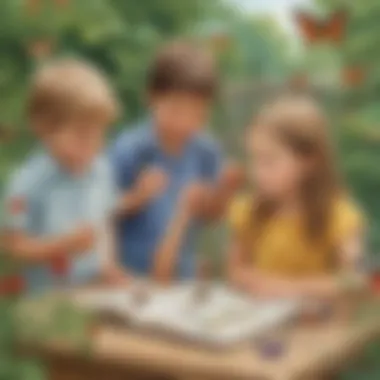

Intro
Backyards are not just patches of grass; they are unexplored territories brimming with potential. For children aged 6-12, every twig and flower is an opportunity to learn and discover. This article will guide parents and caregivers through engaging activities that transform these outdoor spaces into vibrant classrooms.
Incorporating elements of science and playful exploration, these activities extend beyond simple games. They ignite curiosity and foster a love for learning about the natural world. From playing outdoors to conducting simple experiments, children will develop skills, critical thinking, and a deeper understanding of their environment.
Science Fun Facts
Encouraging children to learn through fun facts can spark interesting conversations. Here are some noteworthy trivia that can excite young minds:
- Honey never spoils. Archaeologists have found pots of honey in ancient Egyptian tombs that are over 3000 years old and still edible.
- Water makes up about 70% of the human body. This means that staying hydrated is essential for both adults and children.
- Bananas are berries, but strawberries are not! This is a fun way to introduce children to botanical classifications.
Interesting Trivia and Facts
Learning can be tied to everyday life. For instance, understanding how plants grow or why the sky is blue can lead to questions.
- Did you know that trees can communicate with each other through their root systems and fungal networks?
- Each year, about 1 billion lightning strikes occur worldwide!
Quirky Science Stories
Stories can be a captivating way to teach science. One quirky example involves the discovery of penicillin. In 1928, Alexander Fleming noticed that a mold called Penicillium was killing bacteria in his petri dishes. This serendipitous find revolutionized medicine.
Amazing Science Records
When it comes to records, there are astonishing feats related to nature. The tallest tree in the world, a coast redwood named Hyperion, stands at an impressive 379.7 feet!
Thought-Provoking Questions
Asking questions is at the heart of scientific inquiry. Consider posing these questions:
- Why do some animals hibernate during winter?
- How does gravity affect objects of different weights?
Encouraging kids to think critically about their surroundings cultivates a scientific mindset.
Discover the Wonders of Science
Science is not confined to classrooms. It is all around, especially in backyards.
Exploring Various Scientific Concepts
Children can observe the basics of ecology just by examining local plants and insects. They can learn about their environment's ecosystem by identifying different species of insects or types of grass in their backyard.
Educational Videos and Animations
Integrating technology can enhance outdoor learning. Websites like Britannica offer a plethora of videos that complement hands-on activities. For example, a video about the water cycle can help children understand why plants need water.
Interactive Learning Tools
Tools like magnifying glasses or simple pH kits can bring science to life. Kids can study leaves, soil, or even create simple chemical reactions with household items.
Real-Life Applications of Science
Showing the relevance of science in daily life nurtures a genuine appreciation for the subject. Cooking can teach measurements and changes in states of matter, while gardening offers lessons in biology and environmental science.
Science Experiment Showcase
Hands-on experiments excite curiosity and learning.
Fun and Engaging Experiments
Conducting experiments in the backyard can be thrilling. Here are some ideas:
- Making a lava lamp with oil and water.
- Creating a homemade weather station to track temperature, rainfall, and wind.
- Planting seeds in different soil types to see which grows best.
Step-by-Step Instructions
For the lava lamp experiment, you will need:
- A clear bottle
- Water
- Cooking oil
- Food coloring
- Alka-Seltzer tablets
Instructions:
- Fill the bottle with water until it is a quarter full.
- Pour in some cooking oil. Observe that it floats on top of the water.
- Add food coloring.
- Break an Alka-Seltzer tablet into pieces. Watch the reaction!
Materials List
- Clear bottle
- Cooking oil
- Water
- Food coloring
- Alka-Seltzer tablets
Safety Tips and Precautions
Always supervise children during experiments. Ensure they wear safety goggles if needed, and explain the importance of following instructions carefully.
Engaging in backyard exploration not only educates children but also connects them with nature. By integrating scientific concepts and hands-on activities, parents can inspire a new generation of thinkers and explorers.
Preface
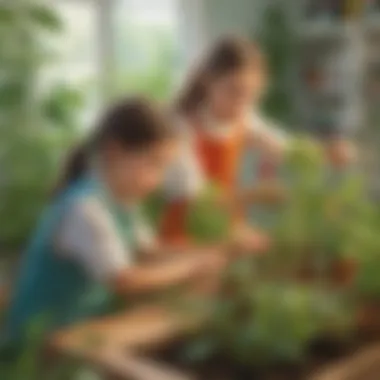
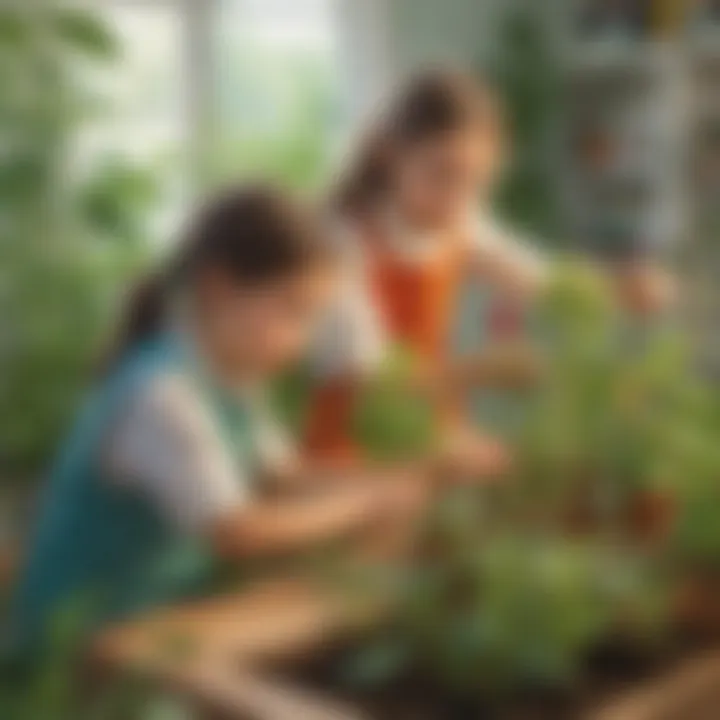
Exploring the backyard can offer unique opportunities for learning and play. Engaging activities in this familiar environment not only allow children to connect with nature but also lay a foundation for scientific curiosity. Children, especially between the ages of 6 to 12, exhibit a natural inclination towards exploration. By making their backyard a living laboratory, parents and caregivers can encourage this inclination.
Backyard exploration fosters many skills. Cognitive benefits include enhanced problem-solving abilities and critical thinking. As children investigate the environment, they ask questions and seek answers, nurturing their intellectual development. Physical benefits, like improved coordination and strength, arise when kids engage in active play. Additionally, social skills flourish as children collaborate during games or projects, learning valuable lessons in teamwork and communication.
Considerations for creating a productive exploration environment are essential. Safety is a primary concern. Well-defined boundaries and supervision help ensure children's well-being while they explore. Moreover, materials for activities should be age-appropriate and aimed at inspiring engagement. This holistic approach will maximize the educational impact of backyard activities.
Overall, the backyard serves as a versatile platform, facilitating a blend of fun and learning. This article will guide parents on how to structure engaging activities that utilize the backyard effectively. By integrating educational concepts seamlessly into play, children can embark on a journey of imagination and discovery.
The Importance of Outdoor Play
Outdoor play is essential for children. It fosters growth in various ways. The backyard becomes a dynamic space for exploration and learning. Engaging in outdoor activities allows children to experience nature first-hand. This strengthens their understanding of the world.
One of the most significant aspects of outdoor play is its role in cognitive development. When children interact with their surroundings, their brains work actively to process new information. They observe, ask questions, and solve problems naturally. Through these experiences, they develop critical thinking skills.
Cognitive Benefits
Cognitive benefits from outdoor play are profound. Engaging with nature helps in enhancing memory and attention spans. For instance, when children observe different plants or insects, they remember details better. This hands-on learning contrasts sharply with traditional classroom settings. Their observations lead to curiosity and a desire to learn more. Encouraging this curiosity while allowing the children to explore their thoughts is key.
"Nature is the best classroom for young minds, offering limitless opportunities for inquiry and discovery.”
Outdoor activities can also boost creativity. When given the chance, children invent games or create stories based on their surroundings. This open-ended play encourages imagination.
Physical Development
Physical development is another crucial area significantly impacted by outdoor play. Children engage in activities that improve their motor skills. Running, jumping, or climbing promotes coordination and balance. When kids play outdoors, they are much more active. This leads to healthier bodies. For example, a simple game of tag can enhance cardiovascular health, while climbing trees can strengthen muscles.
The outdoor setting also encourages risk-taking. When children navigate obstacles or determine the best way to climb, they learn assessment and decision-making. Parents should feel confident allowing kids to explore within safe boundaries.
Social Skills Enhancement
Outdoor play can greatly enhance social skills. In a backyard or park setting, children interact with peers. This interaction teaches them about sharing, negotiation, and teamwork. Games often require collaboration, improving communication. Disagreements arise too, but these teach conflict resolution.
When children are engaged with their peers, they learn to express themselves better. They understand the importance of listening as they interact. Encouraging group activities fosters friendships and builds empathy.
Backyard Science Experiments
Backyard science experiments offer a unique opportunity for children to engage in hands-on learning while exploring their environment. These activities serve as a bridge between theoretical knowledge and practical application. When kids conduct experiments, they not only learn scientific concepts but also develop critical thinking and problem-solving skills. Backyard science can ignite curiosity, transforming the mundane into the marvelous. It encourages children to ask questions and seek answers through observation and experimentation.
In addition to cultivating an interest in science, these experiments foster connection with nature. Kids can witness firsthand the processes that govern their surroundings. Whether it is observing the growth of plants or testing soil quality, each experiment presents lessons about ecology and the natural world. Furthermore, these shared experiences can strengthen family bonds as parents and caregivers engage alongside children, reinforcing the importance of collaborative learning.
Soil Samples and Testing
Examining soil is a foundational science activity. Collecting soil samples can reveal much about the environment. Children can dig small holes in their backyard, gathering soil from different locations. They can observe differences in texture, color, and composition. This initial investigation can spark interest in how soil types affect plant growth, water drainage, and nutrient availability.
Next, simple tests can be conducted. Children can use vinegar and baking soda to test soil acidity. If the soil bubbles with vinegar, it indicates alkaline properties. These hands-on observations help children understand the relationship between soil and plant health. Utilizing common household materials for this activity emphasizes the accessibility of scientific exploration.
Plant Growth Observations
Tracking plant growth is another engaging science experiment. Children can plant seeds in various conditions to see how different factors affect growth. For instance, they can use different soil types (sand, clay, and potting soil) or vary light conditions (direct sunlight versus shade). This approach allows kids to conduct comparative studies that highlight the significance of environmental variables.
Keeping a growth journal can enhance this activity. Children can note their observations, sketch the plants, and record measurements. They can reflect on questions such as: What helped the plants thrive? What factors hindered their growth? This activity not only encourages scientific inquiry but also enhances writing and observational skills. Monitoring plant development transforms backyard spaces into living laboratories.
Weather Station Projects
Creating a mini weather station at home is an engaging way for children to learn about meteorology. Kids can use simple materials to measure rainfall, temperature, and wind speed. For example, they can make a rain gauge with a clear plastic bottle, mark measurements on the side, and place it outside to gather rainwater.
To measure temperature, children can use thermometers and track daily highs and lows, plotting the data on a graph. Additionally, a homemade anemometer can be built using paper cups and straws to measure wind speed. Monitoring the weather can allow kids to correlate their findings with local meteorological patterns, deepening their understanding of climate and ecology.
Conducting backyard science experiments not only nurtures curiosity but also promotes outdoor activity, laying the groundwork for lifelong learning and appreciation for nature.
In summary, backyard science experiments provide varied learning experiences. By engaging in soil testing, observing plant growth, and establishing weather stations, children develop a robust understanding of scientific principles rooted in real-world applications. These activities nurture a scientific mindset and enhance environmental awareness.
Outdoor Games with a Learning Twist
Outdoor games serve not only to entertain but also to educate. They encourage physical activity while fostering curiosity and exploration. By incorporating learning elements into play, children engage in critical thinking and develop various skills. These games connect them with nature, making observations more meaningful. Promoting teamwork and problem-solving is another vital aspect. Active participation leads to retaining information better than traditional classroom settings.
Nature Scavenger Hunts
Nature scavenger hunts are a brilliant way to blend exploration with learning. Children can search for specific items in their backyard or local park. They may look for particular leaves, rocks, flowers, or bugs. Creating a checklist enhances focus and observation skills. As they find items, discussions can arise about each object's significance. This dialogue can introduce concepts of biology and ecology in an accessible way. A well-planned scavenger hunt encourages collaboration among children. It teaches them to communicate and share findings, bridging social skills with nature appreciation.
Biodiversity Bingo
Biodiversity Bingo combines game mechanics with ecological education. Each bingo card features various plants, animals, or habitats that children may encounter outdoors. As they explore, they can mark off what they see. This activity cultivates awareness of local biodiversity. It can prompt conversations about ecosystems and the roles species play. Creating unique cards suited to a local environment maximizes engagement. When children learn through play, their knowledge is likely to stick. Plus, it has the added benefit of fostering friendly competition among peers.
Obstacle Courses Inspired by Physics
Designing an obstacle course inspired by physics principles makes for an invigorating activity. Children can test concepts such as gravity, momentum, and balance while having fun. For example, constructing a balance beam or using hula hoops can illustrate weight distribution and equilibrium. As they navigate the course, they apply problem-solving skills to overcome challenges. Documenting their times for completing the course can also introduce basic physics of speed. Such activities promote physical fitness while teaching fundamental scientific principles. Parents and caregivers can guide discussions, connecting play to learning opportunities.
Creative Arts and Crafts Outdoors
Creative arts and crafts play an essential role in backyard exploration. They blend nature with artistic expression, allowing children to engage with their environment while developing their creativity. These activities foster a sense of accomplishment, promote imaginative thinking, and enhance fine motor skills. They also serve as a medium for children to explore their thoughts, feelings, and observations about the natural world.
By integrating materials such as leaves, flowers, and soil, children learn to appreciate the beauty and complexity of their surroundings. This hands-on approach can make learning more relatable and enjoyable, encouraging kids to spend more time outdoors. Additionally, they gain a practical understanding of environmental science and art, which enriches their overall learning experience.
Natural Material Art Projects

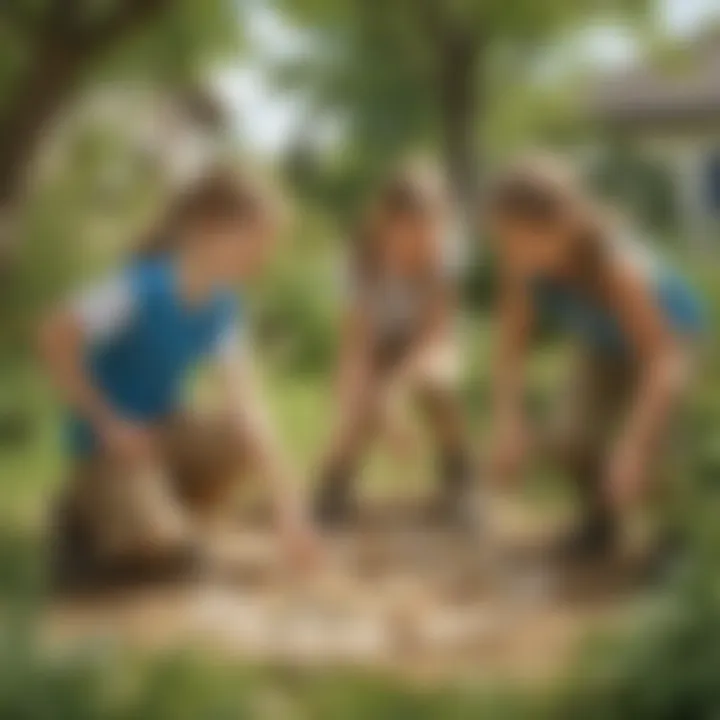
Natural material art projects offer an immediate connection to the surroundings. Materials like twigs, stones, and flowers can be turned into unique art pieces. For instance, children can create sculptures using sticks to form abstract shapes or use stones to paint landscapes.
To begin, gather materials from the backyard. It can be helpful to have a few simple tools like glue, scissors, and string. Kids can arrange their gathered items, experimenting with different layouts before the final assembly. Here are some ideas:
- Rock Painting: Kids can paint stones with different patterns or messages. Once dry, they can be placed around the garden or given to friends.
- Twig Frames: Collect twigs and assemble them into frames for pictures or nature-themed illustrations.
- Leaf Prints: Use leaves to create prints by applying paint to one side and pressing it onto paper.
These projects not only nurture creativity but also encourage discussions about nature and the environment.
Sun Prints and Nature Collages
Sun prints, also known as cyanotypes, are fascinating ways to create images using sunlight and natural objects. This technique enables children to combine art with simple science. The process involves placing items such as leaves or flowers on light-sensitive paper. When exposed to sunlight, the areas covered by the items remain white, creating a captivating silhouette effect.
To get started, gather light-sensitive paper, which can be purchased from art and craft stores, and materials from the backyard. Follow these steps:
- Lay out the natural materials on the sun-sensitive paper.
- Expose the paper to sunlight for a short period, usually around 2-5 minutes.
- Rinse the paper in water to reveal the prints.
Nature collages allow for more expansive creativity. By arranging various natural materials on a canvas or paper, children can create detailed scenes or abstract art. They can include items like petals, leaves, and even bits of grass. These collages can reflect personal experiences or concepts learned through outdoor exploration.
Plant-Based Dyes
Using plant-based dyes is an engaging way to combine creativity with education. Children can create dyes from various plants, such as turmeric, beets, or even avocados. This process can teach them about colors and chemistry while fostering hands-on exploration.
To make simple plant-based dyes, children can follow these steps:
- Gather the plant materials and chop them into small pieces.
- Place the pieces in a pot with water and bring it to a boil.
- Simmer for about 30 minutes, allowing the color to infuse into the water.
- Strain the liquid, providing a natural dye for fabrics or paper.
Encouraging children to experiment with different materials helps them see the fun side of science. While using natural dyes, they will learn not only about colors but also about sustainability and resources. This kind of activity promotes an ecological mindset while offering creative expression and time in nature.
Involving children in creative arts and crafts outdoors enhances their connection to the environment. They learn, create, and express emotions, all while having fun in the fresh air.
Gardening as a Learning Tool
Gardening serves as an exceptional tool for children to learn in a hands-on manner. This activity combines the concepts of science, responsibility, and patience, fostering a significant connection to nature. Throughout the gardening process, children can learn about plant biology, ecology, and the importance of sustainability. By engaging in gardening, they can observe life cycles, explore ecosystems, and understand the impact of their actions on the environment. Such activities not only enhance their knowledge but also encourage them to appreciate the beauty of outdoor spaces.
Additionally, gardening can instill essential life skills. Children learn the importance of responsibility by caring for plants, from watering to weeding. They discover the value of hard work as they see the fruits of their labor grow over time. Furthermore, gardening can improve problem-solving skills. If a plant is not thriving, a child must think critically to understand what went wrong and how to fix it.
"Gardening is not just about planting seeds; it's about cultivating curiosity and understanding nature's processes."
Incorporating gardening into backyard activities nurtures not only scientific understanding but also emotional and social growth. This multifaceted approach makes gardening an ideal learning environment, linking academic concepts with practical experience.
Starting a Backyard Garden
Starting a backyard garden may seem simple, but it provides invaluable education. Parents and children can work together to choose a location, select plants, and prepare the soil. Children learn to measure space, which introduces them to mathematics as they plan out the layout of their garden.
To begin, choose a suitable spot with adequate sunlight, typically 6-8 hours a day is optimal. Involve children in selecting plants that interest them, like tomatoes, carrots, or flowers. It's a good chance to discuss the best growing conditions for each type of plant. When it comes to soil preparation, children can get their hands dirty, learning about soil types and how to improve them with compost.
Watering, weeding, and harvesting offer ongoing lessons. Children can keep journals to document what they observe daily. This regular engagement helps form a routine, making learning enjoyable and relevant.
Companion Planting for Science
Companion planting opens up discussions about ecosystem interdependence. Certain plants can work well together, helping each other grow. Children learn about this symbiotic relationship through practice by planting herbs alongside vegetables. For instance, planting basil near tomatoes can improve flavor and repel pests.
This concept can be explored scientifically, too. Children can hypothesize about which plants might benefit each other and test their ideas in their gardens. This observation enhances critical thinking and encourages scientific inquiry. Discussing why certain plants do well together can lead to lessons about plant anatomy and soil chemistry, enriching their overall understanding.
Learning About Pollinators
Pollinators play a crucial role in our ecosystems and understanding them is essential. Gardening provides a platform to observe bees, butterflies, and other pollinators in action. Planting flowers that attract these creatures not only beautifies the garden but also establishes an important link in the food chain.
Children can learn to identify various pollinators and understand their behaviors. Parents can facilitate discussions about the life cycle of pollinators and their necessity in food production. This direct engagement promotes a respect for nature and an awareness of environmental issues.
By observing pollinators, children witness firsthand how interconnectivity works. Lessons on ecology and biodiversity become much more engaging when they are part of a living classroom.
Integrating gardening activities into a child's life offers an abundance of learning opportunities that extend beyond typical educational settings. Encouraging exploration through gardening fosters not only knowledge but a lifelong appreciation for the natural world.
Incorporating Technology into Backyard Activities
Integrating technology into outdoor activities can substantially enhance children's learning experiences. Technology offers tools that can foster curiosity and deepen understanding of the natural world. When children use technology judiciously in their explorations, they can collect data, make observations, and engage more profoundly with their environment. By incorporating various technological elements into backyard activities, children learn to observe patterns, analyze results, and reflect on their findings.
Using Apps for Nature Exploration
Mobile applications can transform the way children observe and interact with nature. Apps like iNaturalist and Seek allow kids to identify plants and animals by simply taking a picture. This builds their observational skills and introduces them to biodiversity. Furthermore, these apps provide opportunities to learn about various species, their habitats, and conservation efforts. Engaging with technology in this manner encourages a sense of stewardship for nature.
"Using technology to explore nature can promote a sense of wonder and responsibility towards the environment."
Capturing Data with Mini Weather Stations
Creating a mini weather station is an ideal activity to delve into meteorology. Simple kits are available for purchase, or families can build their own using household materials. Children learn to measure temperature, humidity, and wind speed. Recording this data over time helps them observe weather patterns and understand climatic changes. This hands-on approach reinforces the scientific method and enhances critical thinking skills.
Digital Journaling and Observation
Digital journaling provides a meaningful way for kids to document their outdoor experiences. By using tablets or computers, children can record their findings, sketch observations, and write reflections. This can also include photography, turning their journaling into a visual narrative. Parents and caregivers can encourage this practice by discussing entries and highlighting discoveries. Digital journaling not only promotes literacy skills but also enhances memory retention of their explorations.
In summary, incorporating technology into backyard exploration enriches the learning experience for children. It offers tools to enhance their curiosity and provides new ways to observe, document, and understand the world around them.
Safety Considerations for Outdoor Activities
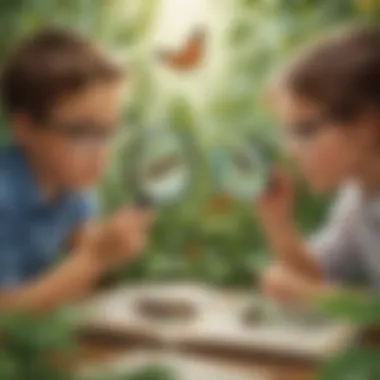

Safety is a paramount concern when engaging in outdoor activities, especially for children. Backyard exploration can yield rewarding experiences, but hazards can be present. Proper safety measures not only protect children but also allow parents and caregivers to feel at ease while their kids explore the outdoors. Recognizing risks, ensuring supervision, and implementing first aid preparedness are essential components of a comprehensive safety strategy.
Supervision Guidelines
Active supervision is crucial in ensuring that children enjoy their exploration safely. Parents and caregivers should remain within sight and hear of children at all times. This allows for a quick response in the event of any incidents. Here are some tips to consider:
- Designate a specific area for play and exploration where children can be easily monitored.
- Communicate clearly with children about boundaries and safety rules that must be followed while playing outside.
- Encourage children to express any concerns or feelings while they are exploring, creating an open line for dialogue.
First Aid Tips for Parents
Having knowledge of basic first aid can be invaluable in managing minor injuries that might occur outdoors. Parents should be prepared by having a well-stocked first aid kit on hand. Consider the following items for a complete first aid kit:
- Adhesive bandages for cuts and scrapes.
- Antiseptic wipes to clean wounds.
- Gauze and medical tape for larger injuries.
- A thermometer to check for fevers.
In addition, parents should be aware of how to treat common outdoor-related injuries:
- For insect bites or stings, wash the area, apply a cold compress, and use antihistamines if needed.
- For minor burns, cool the burn under running water and cover with a sterile bandage.
Sun Protection Strategies
Protection from sun exposure is a critical aspect of outdoor activities, especially for children with sensitive skin. Parents should implement the following strategies:
- Apply broad-spectrum sunscreen with an SPF of at least 30, and reapply every two hours, or more frequently if swimming.
- Ensure that children wear protective clothing, including hats with brims and UV-blocking sunglasses.
- Plan outdoor activities during the cooler parts of the day, avoiding peak sun hours typically between 10 AM and 4 PM.
"Preparation and awareness of surroundings lead to safer outdoor experiences for children."
In summary, safety considerations play an integral role in backyard exploration. By understanding the importance of supervision, being prepared for first aid situations, and implementing sun protection strategies, parents and caregivers can facilitate a worry-free outdoor learning environment.
Engaging Parents and Caregivers
Involving parents and caregivers in backyard exploration is crucial for fostering a nurturing and stimulating environment. Their engagement offers a dual benefit: it enhances children's learning experiences and strengthens the emotional bonds between caregivers and children. When parents participate, they model curiosity and enthusiasm for learning. This behavior encourages children to explore nature and scientific concepts with endearment.
Parents can also guide children through activities, helping them understand instructions and methodologies, which reinforces analytical skills. Besides, shared activities prepare children to collaborate and communicate effectively; this builds essential social skills. Ultimately, engaging parents and caregivers transforms backyard exploration into a shared adventure that nurtures curiosity while promoting both academic and social development.
Encouraging Participation
To motivate parents and caregivers to join in, it is helpful to present activities that are simple yet enriching. Here are some strategies to consider:
- Host Regular Sessions: Schedule weekly or biweekly exploration days. This establishes a routine.
- Provide Clear Instructions: Share detailed instructions for fun, educational projects. These should be easy to follow so that caregivers feel confident to assist.
- Create a Comfortable Environment: Equip the backyard with basic supplies. Having tools accessible can minimize the barriers to participating.
By implementing these strategies, caregivers may gradually become more interested in taking part. As they experience the joy of discovery alongside their children, their commitment to involvement is likely to deepen.
"Participating in outdoor activities is not just about learning. It’s about creating memories that will last a lifetime."
Creating a Shared Learning Environment
A shared learning environment thrives on mutual respect and encouragement. This can be created in several ways:
- Set Common Goals: Parents and children can agree on objectives for their exploration days, such as discovering new plants or identifying different types of insects.
- Discuss Observations: Engage in discussions about what they find. This dialogue enhances understanding and fosters critical thinking.
- Celebrate Achievements: Recognize both small and large accomplishments. Celebrating achievements fosters a supportive atmosphere that values effort and curiosity.
When parents and caregivers actively contribute, they pave the way for children to feel valued and invested in their learning. This collaboration can lead to increased confidence, making backyard exploration a meaningful and enriching experience.
Closure
In examining the various facets of backyard exploration, it becomes clear that such activities serve multiple important roles in a child's development. Engaging children in outdoor activities not only initiates a strong connection with nature but also fosters curiosity and critical thinking. These experiences help children to develop an appreciation for the environment, which is vital in today’s rapidly changing world.
Educational activities, particularly those that blend learning and play, promote cognitive benefits. Children can enhance their problem-solving skills through experiments and games. For instance, when they observe the effects of weather on plant growth, they learn concepts related to data collection and analysis. This approach makes science accessible and enjoyable.
Furthermore, the physical aspect of outdoor play cannot be overstated. Activities like naturally inspired obstacle courses compel children to engage in physical movement. Such engagement is crucial in combating sedentary lifestyles that can harm a child's long-term health.
Social skills also flourish during these explorations. When children work in groups for projects like biodiversity bingo or scavenger hunts, they practice teamwork. They learn to communicate effectively and navigate social interactions. This aspect of learning is often overlooked but is fundamental for their emotional and social development.
Parents and caregivers play a pivotal role in facilitating these enriching experiences. By participating in the activities themselves, they not only supervise but also foster a sense of community and shared discovery. Creating platforms that invite family engagement in backyard exploration can significantly enhance children's experiences.
In summary, the article highlights that backyard exploration is more than just play; it's a holistic approach to learning. It cultivates curiosity, enhances awareness of the environment, and strengthens familial bonds. These elements combined make backyard exploration an invaluable part of childhood learning.
Key Benefits of Additional Resources:
- Encouragement of Lifelong Learning: Resources kindle curiosity. They inspire children to investigate and learn more.
- Diverse Learning Tools: Various formats like books, websites, and guides cater to different learning styles.
- Structured Activities: They provide organized projects or experiments, making it easier for caregivers to engage with children.
"The best learning experiences happen when children are supported by a variety of educational materials."
Books and Guides for Further Learning
Books are a great way to deepen understanding. They not only provide factual information but also stimulate the imagination. When children read about different topics, they develop critical thinking skills. Many books focus on specific areas of science or nature exploration, teaching ways to observe and experiment.
Some recommended books include:
- The Backyard Scientist: This book offers simple experiments that can be done using household items, encouraging scientific inquiry.
- Nature Anatomy: A beautifully illustrated book that explains different elements of nature, helping children connect their backyard activities with broader topics.
- The Amazing Edible Science Cookbook: Engages kids with the scientific principles behind cooking while combining fun with knowledge.
These books can be utilized alongside activities, helping to provide context and explanations that enhance learning outcomes.
Websites for Science-Based Activities
In the digital age, reputable websites become a vital resource for finding science-based activities. They often contain videos, worksheets, and interactive projects that can supplement backyard exploration.
Noteworthy websites include:
- National Geographic Kids: Contains interactive articles and projects related to nature and science.
- Science Buddies: Offers a wide range of science projects categorized by grade level.
- Serious Science: Focused on comprehensive science activities aimed at engaging students in hands-on learning.
These websites not only provide well-rounded activities but also promote critical thinking and hands-on experience. As children navigate these resources, they gain autonomy in their learning processes, fostering independence and confidence in scientific exploration.







